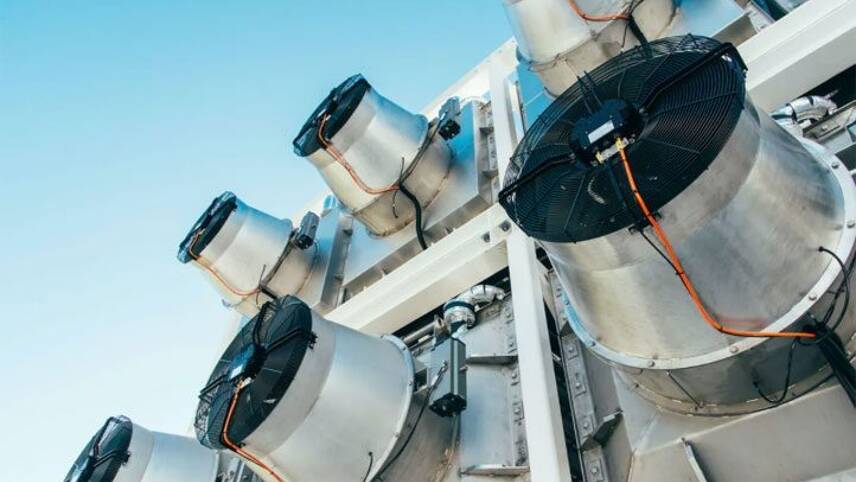Register for free and continue reading
Join our growing army of changemakers and get unlimited access to our premium content

Pictured: A carbon capture array. Image: Climeworks
The call to action is being made by the UN-convened Net-Zero Asset Owner Alliance, in a new position paper supported by NGOs WWF and Global Optimism.
The paper warns that, unless historic levels of under-investment in both nature-based solutions and man-made technologies is rectified now, they are unlikely to be available at the scale needed in the coming decades.
It recommends investment and action to the level that the global, verified capacity of carbon dioxide removal (CDR) removal solutions – both nature-based and man-made – reaches 0.5 to 1.2 gigatonnes of CO2e each year by 2025. This capacity should reach six to 10 gigatonnes by 2050.
For context, global emissions in 2020 were 42 gigatonnes. At present, man-made CDR solutions are estimated to be capturing just 38.5 million metric tonnes of CO2e annually; less than one-thousandth of the global total.
The range of mitigation strategies and tactics laid out in the new position paper focus on abatement, compensation and neutralisation of emissions, in this order of priority.
As well as calling on the private sector to funnel more capital into CDR, the position paper called on policymakers and regulators to play a more active role.
Policymakers, the paper argues, should have greater involvement in efforts to increase the transparency and integrity of voluntary carbon markets, which will need to grow significantly in the coming decades if corporations are to meet their climate commitments. An independent governance body for carbon markets and credits was formed earlier this month by the Taskforce on Scaling Voluntary Carbon Markets – an initiative convened by former Bank of England Governor Mark Carney last year.
In 2020, the Taskforce estimated that the current market for offsets will need to grow by at least 15-fold by 2030 if the private sector is to align with the Paris Agreement’s 1.5C trajectory. By 2050, it may need to be up to 160 times bigger than in 2020.
Policymakers are also called upon to provide more clarity on the future trajectory of carbon pricing. According to the International Monetary Fund, the global average carbon price in 2020 was just $3 per tonne. Some nations, including Canada, have set out requirements for carbon pricing to rise exponentially in the coming years; some Canadian provinces have committed to CAN$170 per tonne in 2030, up from CAN$10 in 2018. But this remains the exception, rather than the norm.
The Alliance has already called for a “radical overhaul” of carbon pricing, in the aim of reaching a $147 minimum price per tonne by the early 2030s.
“Investment in [CDR] solutions – both integrated into and external to production processes – need to reach much higher levels,” the Net-Zero Asset Owner Alliance’s chairperson Günther Thallinger said.
“In parallel, carbon market needs to be scaled up and quality of carbon credits must be ensured.
“What we are missing in the mix is strong policy support. Financial incentives, through a price on carbon, subsidies or tax rebates have been vital to accelerating the deployment of sustainable technologies thus far. We believe that the ‘incentives + mandate’ approach must also be applied to the development of CDR technologies and deployment of nature-based solutions.”
edie recently published a feature exploring the role of nature-based solutions and man-made technologies in meeting net-zero, given that much criticism of both approaches has been prominent in the press in recent months. You can read that article here.
Sarah George


Please login or Register to leave a comment.